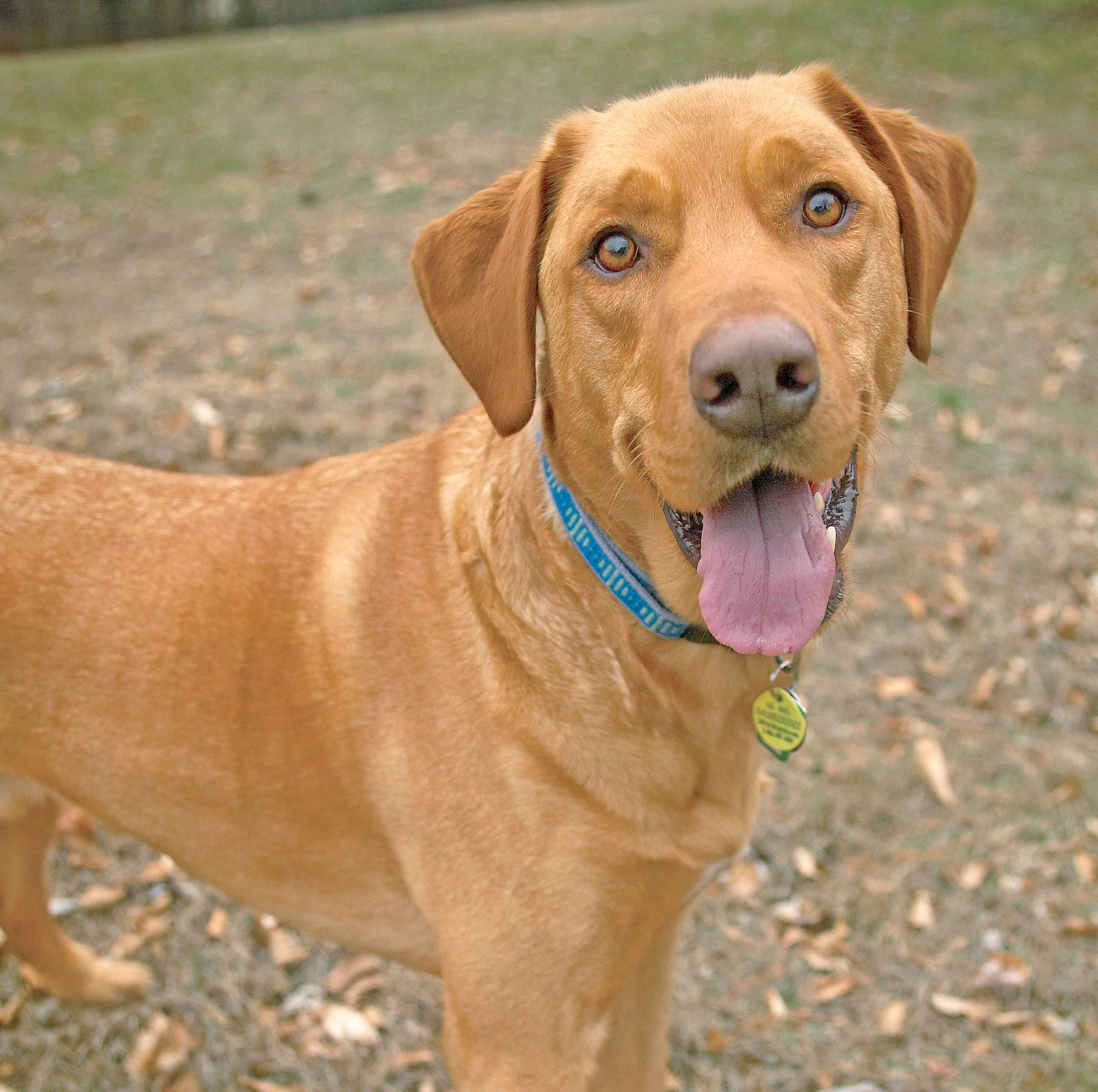Here in New England: Hank, a Well-Traveled Dog
How a stray dog bounded his way into the hearts of one Massachusetts family.

Coffee By Design | Portland, Maine
Photo Credit : Katherine KeenanOriginally published May/June 2007.
There are stories that belong to a place as much as landscape or houses or the people who walk its streets. Through the years, the stories take root and burrow into the fabric of the town. This is such a story. Let’s tell it now before memories become clouded and it slips, as surely it will, in 20 or 30 or 40 years, into local folklore.
The place — Northfield, Massachusetts — lies just south of the New Hampshire border, at the northern edge of the Pioneer Valley. It’s a town without a stoplight, whose graceful 19th-century homes sweep along Main Street until they reach the green expanse of Northfield Mount Hermon School.
A venerable New England prep school, it split its students across two campuses — here in Northfield and at Mount Hermon a few miles to the southwest. But after the 2004-05 academic year, the school tightened its belt and moved everyone to Mount Hermon. The Northfield campus went on the market, leaving it all but deserted.
One family remained, living in a handsome faculty house. Richard Wood is the school’s chief financial officer. He and his wife, Marianne, have three sons (two grown); their youngest, Sam, was living with them and studying at the school. Marianne loved taking Fletcher, the family’s yellow Lab, on long jaunts to nearby wilderness preserves. And this is how, on a fall day in 2005, she found the dog she would call Hank.
“We were climbing Pisgah Mountain,” she remembers, “and I saw this dog. He was emaciated, almost skeleton-like, with these long legs. His left leg quivered whenever he lifted it. I was horrified how thin he was. But I thought, What a gorgeous face. And he was so full of joy. Fletcher was happy to have a buddy. He had no identification. I thought he’d never survive snowfall. All the way to the top, I was looking for people he might belong to. I was happy I didn’t see anyone; I was in love with him. We hiked down together and I brought him home. The dog warden said there were no reports of a missing dog. If no one claimed him in 10 days, we could keep him. The vet said he didn’t know how long he had been without food, but he had torn ligaments in his leg that needed to be repaired. We said yes. He was just so happy and well behaved. He never, ever barked. I counted down the days. After 10 days we registered him. He was ours. We named him for Hank the Cowdog, which we had always read to the kids.”
At first, Hank refused to accept the boundaries of the Woods’ yard, though it stretched nearly the size of a football field. There was so much tempting land to explore. An invisible fence trainer came. Assured that Hank would now stick with Fletcher, Marianne left a back door ajar whenever the family was out, so the dogs could come in and out. That’s how it was on July 11, 2006, with her husband out of town, Sam at the library, and Marianne visiting friends. A sudden and violent thunderstorm swept over Northfield. Driving home, Marianne fretted because Hank was terrified of thunder. When she arrived at 9:30, she found Fletcher, but no Hank. “I knew he had bolted in fear, so he’d be running and running.”
She called for him all night. The next morning, she made posters of Hank and started taking them to nearby stores. “It only takes one time to go look for a dog,” Marianne says, “to realize how ‘needle in the haystack’ it is.” By coincidence, the Woods’ son Jonathan came home from Afghanistan on two weeks’ leave. He drew a perimeter map of where Hank might be over a 20-mile radius. Marianne called it “a perimeter of hope,” and they set out with posters and nails. Hank’s photo stared at people from every gas station, corner store, telephone pole. Police from neighboring towns kept an eye out. Hank’s photo ran in newspapers in Keene, New Hampshire, about 20 miles north; Greenfield, to the south; and Brattleboro, Vermont, to the west. UPS and FedEx drivers said they’d look. Pizza delivery boys slipped photos of Hank into the boxes. A man who drove newspapers to 350 homes put Hank’s poster in each of the mailboxes. Marianne stopped every construction truck she found and handed the workers Hank’s poster. A Winchester, New Hampshire, radio station kept telling its listeners to help find Hank. “It seemed everyone was looking for him,” Marianne says.
The calls came. Hank was traveling far and fast. A postal worker saw him north of Four Corners in Richmond, a local landmark about 12 miles away. A woman called from Richmond. Hank had been in her yard. But she had always feared dogs, so she didn’t approach him. She said, “He just lay down on the side of the road, wet and lost.”
“Our hearts soared,” Marianne says. “We knew he was alive.” Strangers searched hiking trails. People taped Hank’s photo to refrigerators. One phone call came from a man who simply said, “I see you found my dog.” He had seen the poster with Hank’s face and the words: “Help! I’m lost and want to go home!” and thought the Woods were trying to find his owner. Marianne believed that he was Hank’s owner when he asked, “Does his left leg still quiver?'” She asked why Hank was so thin, why his leg had never been fixed, why the man had never notified authorities that his dog was lost. Yet from Hank’s temperament, she also knew he had apparently been loved. If they ever found Hank, she thought, the family would have a hard decision.
After four weeks, Richard Wood concluded that they would never see Hank again. “I lost confidence that our description of Hank was helping. We were getting calls from people about dogs that in no way could have been Hank. People wanted it to be Hank. But how brown is brown? How big is big? But there wasn’t a lot of future in telling Marianne to give up hope. I could see she was willing to go on for a long time.” The Chesterfield, New Hampshire, police called. They had picked up a dog that matched Hank’s description. But when Marianne looked into the police car, she began to sob. It was not Hank. In late August, the Woods left Northfield to go to a family reunion in New York State. Marianne did not want to go; she had to be there for Hank. But Richard assured her that there were many friends who would keep looking.
This brings us to a sun-splashed day, August 28, 2006, and three intrepid teenage girls. Two of them, Emily Jacke and Rebecca Young, were about to begin their junior year at Northfield Mount Hermon; the third was their friend, Sara Voorhis. They had spent the night before at a sleepover, spinning tales of ghosts, spirits, “all things creepy,” as they’d say later. Emily and Rebecca told Sara they’d show her a secret place at their school where spirits lived, a ravine so gloomy and filled with tangled branches and ruins of long-ago structures that few ventured in.
Emily’s father waited in his pickup beside a now-empty dormitory while the girls quickly scrambled out of sight. They picked their way across a stream, descending ever deeper into the woods. They dropped stones in abandoned foundations, listening to the ping when they reached a watery bottom. Suddenly, a noise startled them. “Loud enough to make us jump,” Sara says. “It was a metallic sound, like a thunder board. Like metal crumpling up.” They were alone, they had no cell phone reception — all they had for protection was Sara’s pocketknife, which she opened. They should have run out of the ravine. They know that. Sara implored them to see what it was. Nervous and cautious, they moved toward the noise. “We were all jumpy,” Emily says. “There was a feeling there was something there. A surrounding presence. Spooky.”
They came upon the deep, wide foundation of what they later learned was once a water-collection cistern for the school. They looked down to where the noise kept reverberating. “It’s a dog,” Rebecca gasped. But not a dog like any of them had ever seen. This dog’s ribs poked out. Its paws were ripped and bloody. Its fur was so matted and tangled, it looked more like a phantom than a dog. It frantically climbed a metal beam that reached from the ground to a few feet short of the top, and scrambled up, only to fall down. All around the wall, the dog had left bloody, desperate footprints as it clawed for a foothold. It made no sound except for a thin whine. Amazingly, it wagged its tail. Sara says, “He seemed like he was smiling at us.”
Again, the girls would later admit that what they did may have been foolish. Rabid animals do live in the woods. Scared animals can be dangerous and unpredictable. But that was later reflection. Sara lowered herself onto the beam and slowly backed the dog down to the ground. Then, from behind, she urged him up again, lifting him the final few feet into the arms of her friends. Sara fashioned a leash from her belt, and even though the dog was so weak he kept falling over, he pulled her up the hill, across the stream, onto the lush grass where he rolled and rolled, as the girls shrieked, “We found a dog!”
The call reached the Woods from campus security. A dog was found only 100 yards from their house, in a ravine the family did not know existed. The tag matched Hank’s. He had been gone 48 days, no doubt toppling into the hole in the darkness, in his terror of a thunderstorm, kept alive, the vet later surmised, by eating moss and dirt. He had lost more than 20 pounds.
For days, Hank would not let Marianne out of his sight. He slowly regained his weight and strength. Marianne drove him around the county, thanking all the people who had helped search. She called the dog’s previous owner and said, “We’ve decided that Hank belongs to us.” Driving home after they found Hank, the girls all had the same thought: “Something big just happened here.” Something they will always remember about a day when they wandered to a gloomy ravine and found a dog who will surely travel farther than they can imagine, all the way from that deep, water-logged hole, bounding up and over the stream, bounding into the sunlight, bounding back home, traveling all the way into legend.








I read this story when it first came out in the magazine and was amased by the story but also how much Hank in the story looked like our Hank, Ours is a beloved member of our family as I’m sure Hank in the story is. Dogs are such precious parts of our families and lives. Thank you for this wonderful story!!!!!
I, too, read Hank’s story in Yankee Magazine. It was special then; it is special now. Thank you for sharing it.
Such a wonderful heart warming story. Thank you so much for letting
everyone enjoy it.
Jo
Please tell me that Hank Dog made it back home somehow! I have a sweet yellow lab and so my
heart is with you and Hank. Jeanne
Thank you for a very well-written and heart-warming story. We have always been dog lovers and through the years we’ve become convinced that God created them to be our soul partners exhibiting unconditional love! Now I have my own subscription to Yankee Magazine and gave one also to my brother who still lives in Massachusetts!
The Wood family has been in my heart since 1987 when the let me stay with them for a weekend in Dallas. Such beautiful people and the story touches my heart in a personal way.